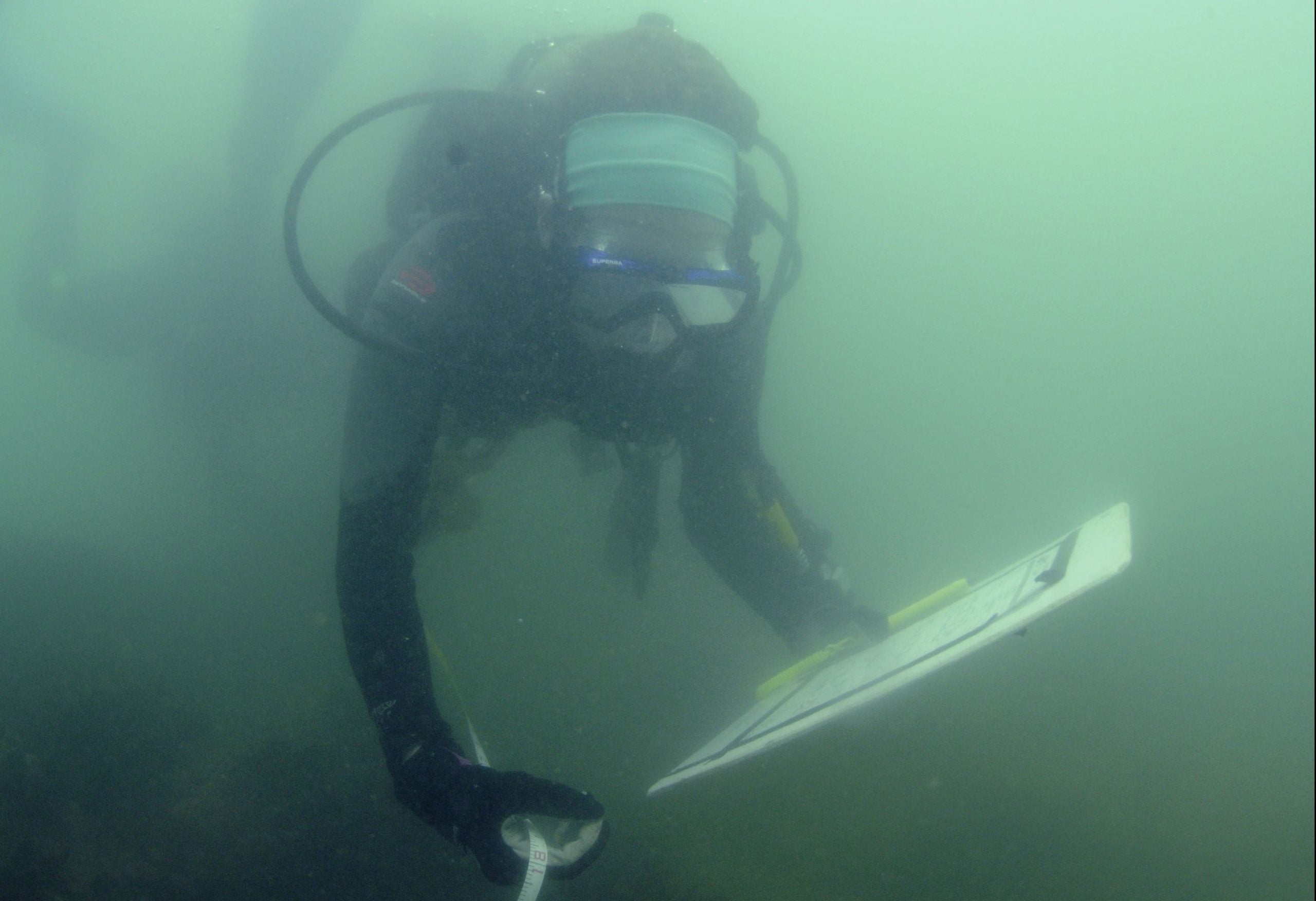Today’s diving consisted of low visibility, persistence, and good communication. Visibility varied between <1 foot to 1 ½ feet depending on of the amount of diver activity in an area and the surge. Two teams attempted and completed trilateration measurements between datum points on the cascable and muzzle of each cannon in piles found so far. These measurements allow the divers to create an accurate map of a site when a baseline would be difficult, or impractical, to set up. If at least one of the datum points has been marked by GPS, the rest of the datum points can be mapped in.
Communication underwater was conducted using different combinations of tugs on the measuring tape. Measurements were conveyed to the recorder on each team using hand signals, which can be very hard to see in such low visibility. There were a few false starts as the divers became more familiar with each other’s signal styles; however, the teams began to work in sync and completed the measurements in less than two hours.
I was on the third team. We attempted to locate the five cannon previously noted that have not yet been found. There were several issues that the search team ran into, like low visibility and large obstructions. Originally, we decided to run a circle search: a pattern where one diver acts as the pivot point while the other diver keeps the line taut and swims around in a circle at a given distance. We decided to use half circles with the pivot point at Cannon 10A into an unexplored area towards the northeast – where the missing cannons were located on the Gluckman mud map. Unfortunately, the line kept snagging on obstructions which easily confused the swimming diver because snags often feel the same as tug signals. The diver would, then, turn around too soon, thinking that their ½ circle had been completed leaving the pivot diver to wonder what happened. Eventually we completed the circle search without snags; however, the divers saw nothing historically significant. We also attempted a jackstay search. Unfortunately, the jackstay search did not work because there was a crowd of divers conducting various tasks on the cannons.
Overall, even though the conditions were less than ideal, the ECU team worked efficiently and completed their assigned tasks. The two trilateration teams finished all but one measurement that would connect the two piles. This task was not completed because the visibility was too poor to accurately record the large distance between the two piles. While the search team was unable to locate the five missing cannon, they were able to rule out an area of interest to the northeast of Cannon 10.
-Sydney
